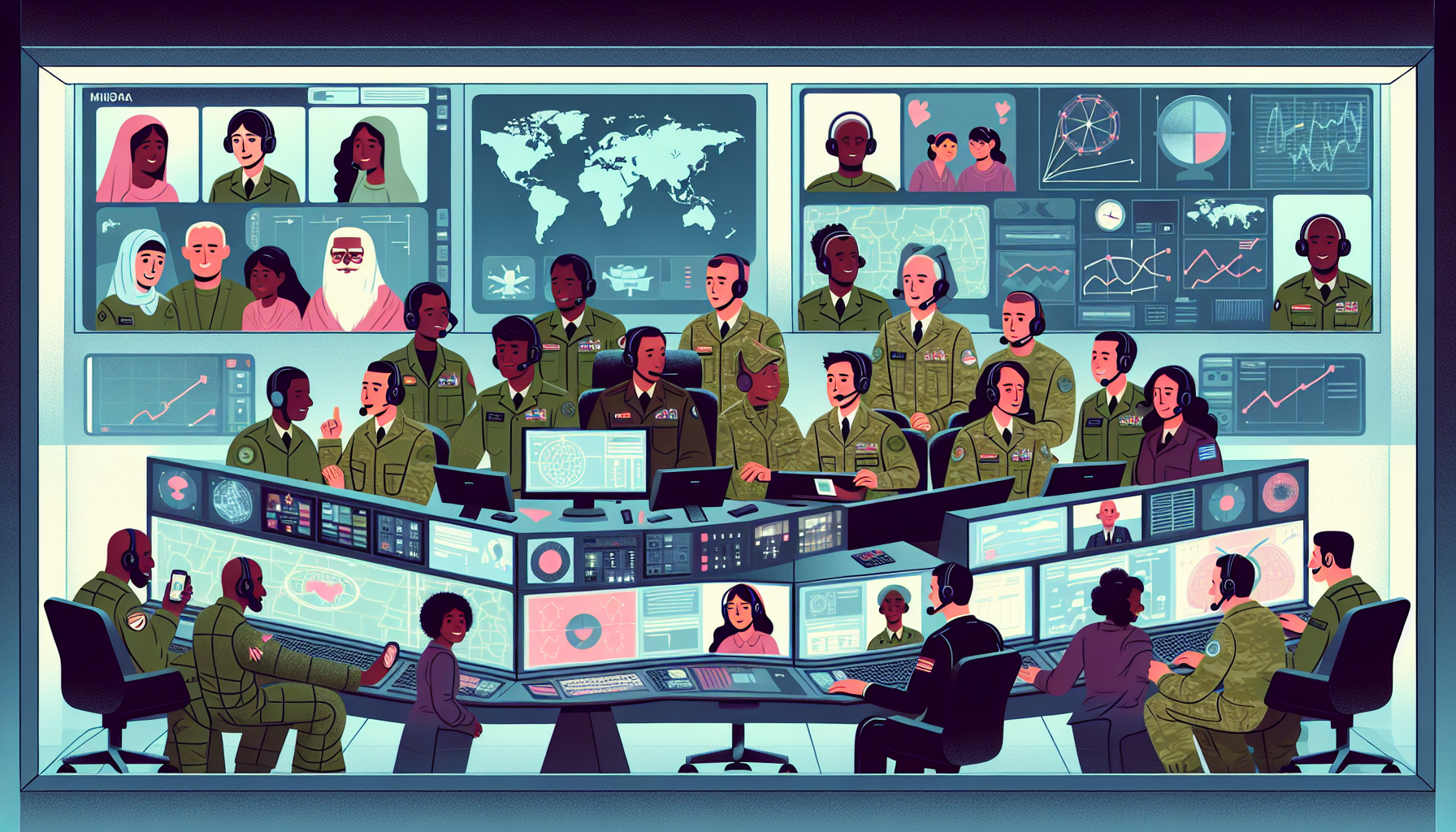Definition
Command and control (C2) is a military term that refers to the exercise of authority and direction by a designated leader over assigned resources in the execution of a mission. It involves the application of leadership, tactics, procedures, and strategies to accomplish tasks and missions effectively. Furthermore, C2 is vital for making decisions, monitoring progress, and adjusting plans as necessary during operations.
Key Takeaways
- Command and Control (C2) is a fundamental principle of military operations that refers to the exercise of authority and direction over armed forces. It is the means by which a commander recognizes an operational environment, decides what action to take, and then acts to accomplish a mission.
- Effective C2 processes contribute to successful military operations by enabling informed decision-making and seamless communication. It ensures that information, resources, and actions are coordinated efficiently and effectively to achieve a common objective.
- The C2 system is not just about human leadership, but also entails the use of advanced technologies, information systems, communication networks, and infrastructure. It is a combination of personnel, equipment, procedures, and structures.
Importance
Command and Control (C2) is a crucial concept in military operations as it pertains to the exercise of authority and direction by a commanding officer over assigned and attached forces in the accomplishment of a mission.
This term encompasses systems and procedures used to gather and analyze information, make decisions, and, ultimately, control resources, including personnel and equipment.
It’s crucial for maintaining the efficiency, effectiveness, and orderliness of military responses and missions.
A well-implemented C2 infrastructure ensures that every unit or member involved in the mission fully understands their role, the current situation, and the overall goal, thereby mitigating potential confusion and error on the battlefield.
Explanation
The purpose of Command and Control (C2) is essentially to direct, coordinate, and control military forces to execute missions effectively and efficiently. It plays an integral role in all aspects of military operations, enhancing operational readiness, mission execution, and overall force effectiveness. C2 involves making decisive and critical decisions during complex situations, taking into account the dynamic and often rapidly changing battlefield environments.
While directing the forces, it ensures that troops or units are maneuvering in harmony while pursuing a common goal. C2 also incorporates a broad range of activities and processes, from gathering and analyzing intelligence, planning, communicating instructions and feedback, to delegating tasks, monitoring progress, and evaluating performance, to strengthen the military’s adaptive advantage in operations. C2 is relied upon to promote the synchronization and integration of capabilities across all domains – land, sea, air, space, and cyberspace.
This coordinated control facilitates interoperability among various services, departments, or even multinational forces, making joint operations feasible. It ensures efficient utilization of resources, reducing the chances of miscommunication, confusion, or duplication of efforts while maximizing the effectiveness of military power. Besides its tactical impacts, C2 also plays a vital role in influencing strategic outcomes of wider campaigns or operations.
By enabling leaders to adeptly navigate the complex and interconnected elements involved in managing a modern military operation, it ultimately contributes to achieving their intended military and political objectives.
Examples of Command and control (C2)
Operation Desert Storm (1991): The Allied Forces’ invasion against Iraq in the Persian Gulf War utilized extensive command and control processes. Advanced communication systems were used to coordinate and execute strategies between various military branches and countries. C2 was essential to ensuring all troops, from ground forces to air forces, were unified in their actions.
Operation Neptune Spear (2011): This was the mission carried out by the U.S. to capture and kill Osama bin Laden in Pakistan. Due to the high-risk nature of the endeavour, efficient command and control systems were crucial. From planning to operational execution, C2 was admired here as it ensured mission success, demonstrating the effectiveness of accurate information flow, decision-making, and coordination.
Invasion of Normandy (D-Day, 1944): The operation relied heavily on command and control in coordinating the movements and operations of the massive coalition of Allied forces. The decision-making and resource allocation by the high command needed effective C2 for the coordination of ground, naval and airborne assets from multiple nations for the massive amphibious attack. The successful implementation of C2 was crucial for the operative success of this turning point in World War II.
FAQs about Command and Control (C2)
What is Command and Control (C2)?
Command and Control, or C2, is a military terminology that refers to the process by which military forces or departments manage and direct operations. It involves the integration of the information obtained to calculate the most efficient and effective strategy, plan, or tactical response.
Why is Command and Control important?
Command and Control is vital as it allows for successful coordination of military operations. It plays a key role in making correct strategic decisions under stress, maintaining order on the battlefield, and ensuring effective use of military resources.
What are the key elements in a C2 system?
A typical C2 system comprises of several key elements: personnel, equipment, communications, procedures, and structures, all of which work together to ensure effective control and command over the military operations.
How has technology impacted C2 systems?
With advancements in technology, the capabilities of C2 systems have significantly improved. Modern technologies, like machine learning and artificial intelligence, allow real-time data analysis, reducing decision-making time and increasing operational effectiveness. Cybersecurity has also become an important aspect due to the digitization of military operations.
Related Military Operation Terms
- Military Decision-making Process
- Tactical Operations Center
- Communication Systems
- Operational Planning
- Information Processing
Sources for More Information
- Department of Defense (DoD): This is the official website of the U.S Department of Defense where you can find multiple resources about C2 and other related military operation terms.
- North Atlantic Treaty Organization (NATO): The NATO’s official website provides detailed information on military terminologies including C2.
- Federation of American Scientists (FAS): FAS is a trusted source that offers a wide range of information about various military operation terms such as C2.
- RAND Corporation: RAND is a think tank that conducts research and analysis on various subjects, including defense and military matters. Their website includes a wealth of resources on topics like C2.
 Benefits.com Advisors
Benefits.com Advisors
With expertise spanning local, state, and federal benefit programs, our team is dedicated to guiding individuals towards the perfect program tailored to their unique circumstances.
Rise to the top with Peak Benefits!
Join our Peak Benefits Newsletter for the latest news, resources, and offers on all things government benefits.





















